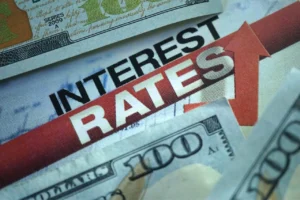Car insurance policies are mandatory in Singapore, which means that if you want to drive in the city-state, you will need to buy car insurance. What’s more, if ever you need to claim your car after a car accident, you will also need to pay car insurance excess, which could be made up of a mix of compulsory and voluntary excess.
But what actually is driver excess when it comes to car insurance, and how does car insurance excess work? In this article, Instant Loan explores everything you need to know about car insurance excess, how it affects the claims process, and the differences between voluntary and compulsory excess.
What is Car Insurance Excess?
Regardless of which insurers you use, every car insurance policy has a car insurance excess regardless of which insurers you use. In short, an excess amount is basically a deductible that you will need to pay if you ever find yourself in a situation where you have to claim your car from your insurer. In a claims scenario, you’ll pay a pre-agreed excess amount while your insurer will pay whatever remains.
Suppose you are involved in a car accident and the repairs to your vehicle will cost $5,000. If you make a claim with your insurer on an insurance policy that comes with a $500 excess, you will pay $500 out of your pocket upfront. Your insurer will then cover the remaining $4,500 of your repair costs.
From an insurer’s perspective, the idea is that by imposing a driver excess on you as a driver, you will be deterred from putting through insurance claims every single time something small goes wrong with your vehicle, and will instead only pursue claims in more serious situations. Excess policies also encourage you to be a safe driver and to save money on future car insurance premiums by building up a No Claims Discount or “NCD”.
How Does Car Insurance with Car Insurance Premiums Work?
Much like most things in the insurance business, car insurance excess is all calculated according to risk levels. For example, certain types of driver, such as a young or inexperienced drivers, are deemed higher risk than others, like a safe driver. The same goes for different types of cars, too – with sports and luxury models considered higher risk than a regular compact sedan.
You may or may not have noticed that your car insurance company lets you adjust your excess – or even remove it altogether – when purchasing or renewing car insurance policies. Generally speaking, a lower excess will result in a higher insurance premium cost.
Conversely, opting for a higher compulsory excess or higher voluntary excess can actually reduce the cost of your premium, as the insurer understands that if you are willing to fork out more upfront in the event of a car accident, chances are you are a lower-risk, safe driver. But excess applies in different ways. Let’s look at the different types of excess most car insurance policies work with.
Different Types of Car Insurance Excess
Two key types of car insurance excess – voluntary and compulsory excess. Here are the primary differences you need to be aware of before you go out and buy car insurance.
1. Voluntary Excess
You choose voluntary excess at the point of taking out an insurance policy. Opting for a higher voluntary excess usually means paying a lower insurance premium. In the event of a car accident, you’ll pay the excess you’ve agreed to as part of your repair claim.
2. Compulsory Excess
Insurers dictate compulsory excess. This refers to a certain amount of excess that is mandatory for you to pay whenever an accident occurs and you start the claims process with your insurer.
When you claim with your insurer, you will need to pay both the compulsory excess set by your insurance company and whatever voluntary excess amount you have agreed to. For example, processing a $5,000 repair claim might require you to pay a $500 voluntary excess plus a $500 compulsory excess while your insurer pays the remaining $4,000.
Depending on the insurance company you purchase your policy with, other types of excess may also apply. Some insurers will add on a young and inexperienced driver excess for under-30s.
In contrast, others might charge a windscreen excess for windscreen repairs, or a standard excess which is not applicable in situations where your vehicle damage was caused by fire and theft. Always check your insurer’s individual T&Cs.

Which Kind of Car Insurance Excess Should You Choose?
Which type of standard excess is right for you largely depends on what kind of driver you are, the type of vehicle you drive, where you live, and other factors.
Safer drivers who stick to simple roads and are less likely to get into an accident can save money on their premiums by opting for a higher voluntary excess, as it’s unlikely they’ll need to process a claim. Conversely, having a higher compulsory excess can prove beneficial for drivers of standard vehicles who tend to drive in riskier areas, as pretty much any accident or repair damage would be smoothly covered.
When Do I Need to Pay Car Insurance Excess?
You’ll be expected to pay the excess you’ve agreed to whenever you claim with your car insurance company. Whether the damage has been caused to your own car or the vehicles of others, you will need to pay your excess (as well as any additional excess) if you are the one at fault.
Conversely, suppose the fault lies with a third party or another person; your excess can potentially be waived, depending on the terms and conditions of your insurance company – so always double-check.
When Is Car Insurance Excess Not Applicable with Car Insurance Premiums?
It’s worth noting that under some extenuating circumstances your insurer’s excess policy might not always be applicable. One such scenario might be if your repair costs are lower than your agreed excess amount. For example, if you have a $500 excess and wish for your car to undertake a basic $100 repair job, you will not be able to claim on your insurance for this repair.
All insurance policies are different, so you should always check the T&Cs with your preferred insurer directly before buying.
Do Other Types of Insurance Also Have an Excess?
Excesses are common in the insurance business in general. If you take out home, pet, or motorcycle insurance, you’re likely to encounter excess T&Cs that function similarly. Remember that it’s always wise to compare the market and shop around as much as possible if you want to find the best car insurance or other insurance-related product to meet your unique needs.
Read Also: Car Insurance Comparisons and Electric Car Insurance and Financing A Car
Car Insurance Excess – Everything You Need to Know
Car insurance excess is complicated, which is why it is crucially important to understand how it works before you purchase insurance policies or lodge any car insurance claims. When it comes to insurance excess, don’t forget that:
- Car insurance excess acts as a deductible that you’ll pretty much always need to pay when making an insurance claim for any car-related accident or damage that is your fault.
- You’ll need to familiarize yourself with the two types of excess – voluntary and compulsory excess – before buying car insurance.
- Different insurers may charge different types of excess. Always double-check whether you need to pay standard excess or young and inexperienced driver excess before making a claim.
- Shopping around can help you to pin down the best car insurance products with the best excess T&Cs to meet your unique needs.
Instant Loan shares all the latest news regarding car insurance, loans for cars and other finance-related topics. If you need a quick loan, we also offer a quick-and-easy loan comparison service where you can compare loans offered by the best financial institutions. Get a personal loan for up to 6x worth your monthly salary!








